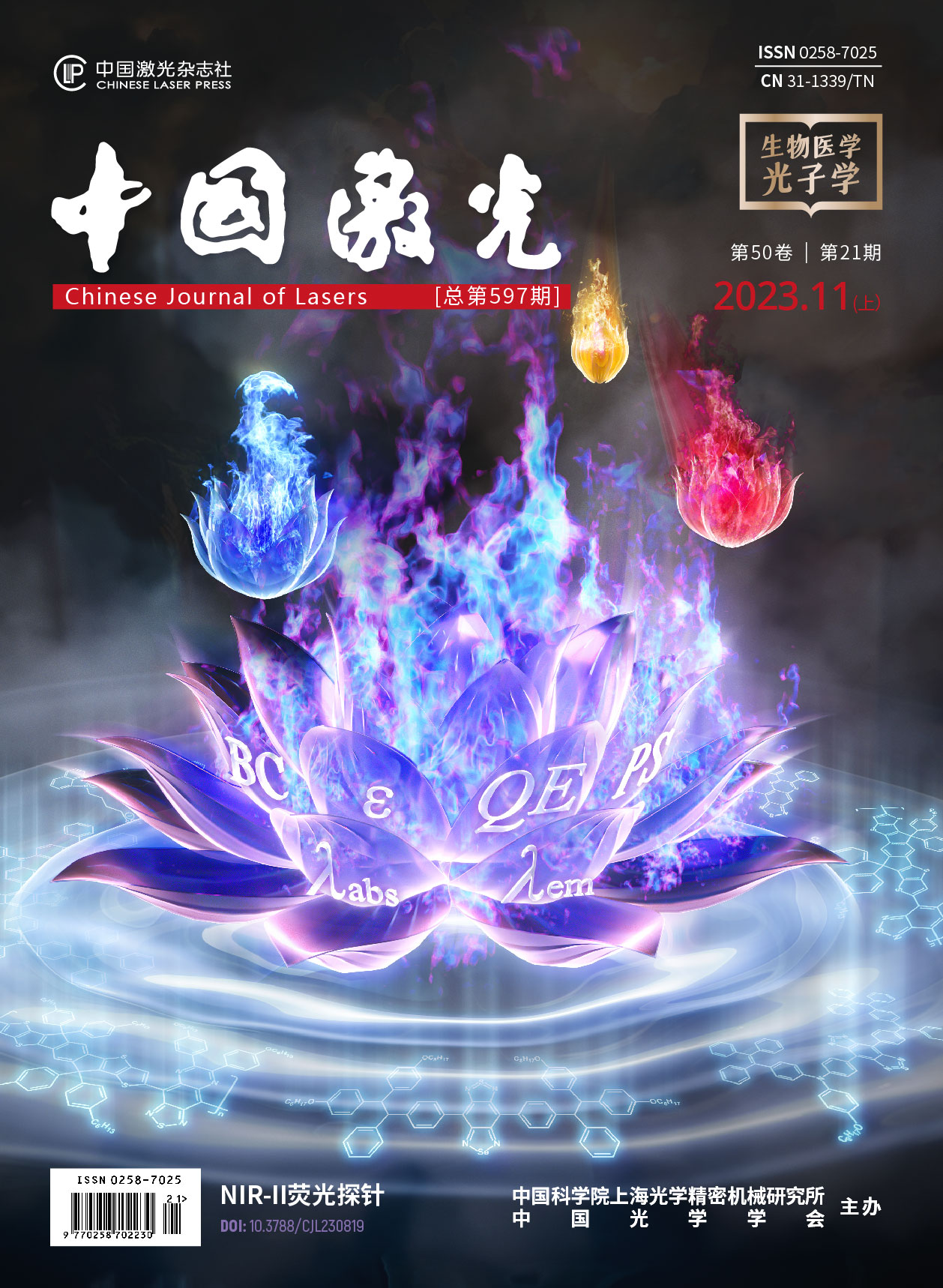温度响应相变纳米探针AuNR@PNIPAM用于近红外二区肿瘤高对比光声成像【增强内容出版】
The considerable potential of temperature-responsive nanomaterials as contrast agents has driven research and development in the field of photoacoustic imaging in recent years. However, the temperature-sensitive nanoprobes currently reported have response temperatures that exceed the tolerable range of humans, and their reversibility is low, which are two serious problems that hinder imaging and long-term monitoring in practical applications. Molecular photoacoustic imaging has emerged as a noninvasive imaging modality for cancer diagnosis, which couples superb optical absorption contrast and an excellent ultrasonic spatial resolution. However, research on molecular photoacoustic imaging has focused on optical wavelengths in the visible and near-infrared (NIR) part of the spectrum between 550 and 900 nm, with a relatively low sensitivity and limited imaging depth. Of note, the characteristic molecules of many major diseases—particularly in the early stage—exhibit no obvious photoacoustic contrast in the optical window of biological tissue (NIR-Ⅰ, 650?950 nm; NIR-Ⅱ, 950?1700 nm). Moreover, most of the current photoacoustic contrast agents are “always-on” probes, which can only provide invariable imaging contrast and struggle to eliminate the inherent background effect of biological tissues. In contrast, activable photoacoustic contrast agents can respond to a given cancer biomarker and emit signals. Therefore, there is an urgent need to develop a stimulus-responsive photoacoustic probe for the second NIR region. In this paper, a reversible temperature-responsive phase-change AuNR@PNIPAM nanoprobe is proposed that can dynamically modulate the temperature field through an external NIR optical switch to obtain contrast-enhanced photoacoustic images.
When the temperature-sensitive AuNR@PNIPAM microgel is delivered to tumor tissue under 980 nm laser irradiation, the gold nanorod core absorbs NIR light energy, triggering a phase transition of the PNIPAM shell. As the temperature exceeds the volume phase transition temperature (VPTT) of PNIPAM, the PNIPAM hydrogel undergoes a sol-gel phase transition, which increases the refractive index around the gold nanorod, inducing a redshift of the localized surface plasmon resonance band and an increase in the absorption-peak intensity of the microgel. Therefore, these microgels exhibit enhanced and switchable NIR absorption in the physiological temperature range, allowing high-contrast imaging of tumors.
The authors characterized the morphology and temperature response of the synthesized AuNR@PNIPAM microgel. It was observed that PNIPAM was successfully compounded onto AuNR, and when the temperature exceeded the VPTT of PNIPAM, the volume change of the PNIPAM hydrogel resulted in a change in the refractive index, enhancing the absorption in the second NIR region, as illustrated in Fig. 2. Furthermore, the microgel exhibited a high and stable photothermal conversion efficiency in in vitro and in vivo photothermal experiments, as shown in Fig. 4. The experimental results in Fig. 5 confirmed that the prepared AuNR@PNIPAM microgel could enhance the photoacoustic imaging contrast when an external NIR optical switch was used to trigger the temperature phase transition. Therefore, owing to their excellent photoacoustic imaging contrast ability, AuNR@PNIPAM microgels have considerable potential for early cancer diagnosis and hyperthermia detection.
In this study, the photoacoustic signal of AuNR@PNIPAM microgels was amplified near the physiological temperature, indicating their feasibility for high-contrast photoacoustic imaging of tumors. AuNR@PNIPAM microgels exhibited improved NIR-Ⅱ absorption under 980 nm laser irradiation, because of a redshift of the localized surface plasmon resonance band and an increase in the absorption-peak intensity. Furthermore, the prepared AuNR@PNIPAM microgels exhibited reversible temperature-responsive characteristics and an efficient and stable photothermal conversion effect; hence, they could modulate the temperature field through the NIR optical switch to realize the reversible switching of NIR-II absorption. Thus, these microgels could control the turning on/off of the photoacoustic signal to suppress the unwanted background signals. This work proposes a strategy for achieving high-contrast imaging of tumors by dynamically responding to temperature stimuli, providing guidance for the development of temperature-responsive smart photoacoustic probes for enhancing imaging contrast.
孙晓冬, 石玉娇. 温度响应相变纳米探针AuNR@PNIPAM用于近红外二区肿瘤高对比光声成像[J]. 中国激光, 2023, 50(21): 2107104. Xiaodong Sun, Yujiao Shi. Temperature‑Responsive Phase‑Change AuNR@PNIPAM Nanoprobe for the Second Near‑Infrared Region Tumor‑Contrast Photoacoustic Imaging[J]. Chinese Journal of Lasers, 2023, 50(21): 2107104.







